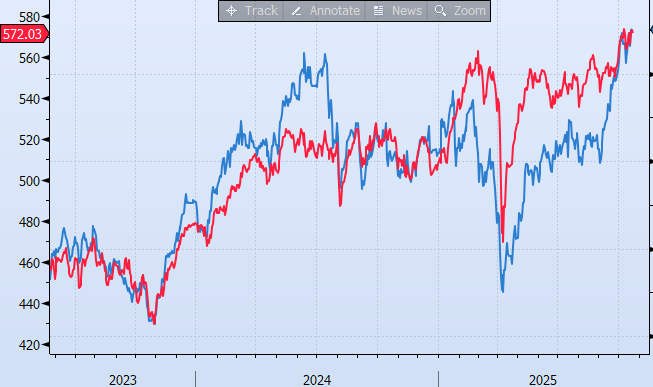Investment Committee - November 2025
- atontorovits
- 4 days ago
- 4 min read
Updated: 7 hours ago
The AI Investment Cycle as the Dominant Market Force

This month, the Investment Committee’s focus shifted once again to the large-scale macroeconomic forces driving market valuations. As traditional drivers present conflicting signals, our latest observations converge on a single, dominant theme: The rapidly growing influence of Artificial Intelligence (AI) capital expenditure on contemporary market valuations. This analysis outlines the structural shifts we believe are dictating market direction and details our subsequent investment mandate.
The Quantitative Easing Era (2009–2022)
The meeting began with a review of recent market history—a look back at the monetary forces that drove markets to their pre-2023 peaks.
From 2009 through 2022, the Federal Reserve undertook an unprecedented expansion of its balance sheet, primarily through large-scale asset purchases, known as Quantitative Easing (QE). By buying Treasury bonds and mortgage-backed securities, the Fed injected vast liquidity into the financial system, consequently driving down long-term interest rates.

In turn, lower interest rates encouraged investors to seek higher returns in riskier assets, particularly equities. Abundant liquidity and near-zero short-term rates dramatically reduced the cost of capital for corporations, supporting both earnings growth and corporate valuations. This environment—characterized by cheap funding, ample liquidity, and heightened risk appetite—contributed materially to the sustained rise in equity prices over that period. In essence, the Fed’s balance sheet expansion acted as both a backstop and a powerful catalyst, stabilizing the stock market after the 2008 financial crisis and supporting the subsequent prolonged bull market. This dynamic, driven by monetary policy, was the primary supportive factor for markets up until 2023.
The Fiscal Hand-off and Policy Uncertainty
Following the QE era, fiscal policy became the more prominent driver. During the final year of the previous administration, targeted government spending and tax policies helped sustain economic growth, providing a significant tailwind to corporate earnings and investor confidence.
As the 2024 election concluded, it became clear that the incoming administration would pursue policies tolerant of overheated equities—emphasizing pro-growth measures, lighter regulation, and restraint on fiscal tightening. This blend of steady fiscal support and a market-friendly policy outlook further bolstered risk appetite and helped sustain elevated valuations.
The discussion then fast-forwarded to today’s environment: Economic policy uncertainty in the U.S. has historically shown a strong correlation with stock market volatility. It is uncertainty itself—not simply policy content—that drives market nervousness. When policymakers signal ambiguity or provide no guidance, investors respond by repricing risk premia, which is naturally reflected in elevated volatility levels.

Committee members agreed that if this historical relationship still holds today, then the current elevated levels of U.S. economic policy uncertainty (tariffs and trade policy are a good example) cannot be assumed to provide a stabilizing influence on equity markets at this time. On the contrary, persistent uncertainty should be expected to feed higher equity volatility, potentially creating headwinds for equities at current valuations.
The New Market Driver: AI Capital Expenditure
Despite conflicting evidence from the economy and the geopolitical front, stocks continue to edge higher. This led to the central question for the meeting: Which factors are continuing to sustain major equity indices at current levels?
The Committee ultimately agreed that it is the rapid expansion of Artificial Intelligence and the significant capital expenditures (Capex) firms are making in AI that are fundamentally reshaping earnings growth and driving stock prices higher. This reality was underscored last week when Nvidia became the first-ever company to cross the $5 trillion market capitalization threshold. Thus, AI capital expenditure is now a factor that increasingly influences equity performance—even more than some of the traditional drivers we have relied on in previous years.
This striking development deserves special attention. The correlation between AI-driven capital expenditure and major stock indices has surged to unprecedented levels—hovering consistently between 75% and 85%.

To put this in perspective: Most of what we know about cause-and-effect relationships in financial markets does not possess the statistical significance that AI-linked capital expenditure holds today against the price level of stock markets. Correlations this strong are among the highest on record between any single macroeconomic or fundamental data point and stock prices. This uncommon alignment highlights that AI investment is not just another market factor—it is rapidly becoming a central, market-moving force. This close connection also implies that equity prices could prove vulnerable if AI Capex stalls or disappoints future expectations. The scale and immediacy of AI’s influence signal a structural shift: Markets are now highly sensitive to innovation-driven investment cycles, making careful monitoring of AI-related Capex crucial for anticipating price fluctuations in global equities. In this unique cycle, AI-related capital expenditure is no longer just a data point—it is, effectively, the trade.
Conclusion
The committee’s analysis confirms a critical transition: Market leadership is shifting from policy-driven liquidity (QE) and broad fiscal support, toward concentrated, innovation-driven capital deployment (AI Capex). Our investment thesis must now reflect this reality. Going forward, the portfolio’s exposure will be rigorously tied to the quality and sustainability of the AI investment cycle. We must maintain disciplined exposure to firms leading this Capex wave and develop contingency plans should the correlation begin to weaken. We will dedicate significant time next quarter to modeling the sensitivity of equity valuations to various scenarios of future AI expenditure growth.
Authors: John Couletsis and Kostas Metaxas

